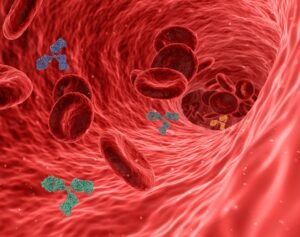“Even in Autumn, Fleas and Ticks Remain a Threat to Pets—and Their Owners”
September 1, 2025 – Tokyo — As the summer heat gives way to crisp autumn air, many pet owners take comfort in the belief that the worst of the insect season is over. Yet, experts warn that fleas and ticks remain quite active well into November, especially when temperatures linger around 68°F (20 °C) and humidity levels remain elevated.
Whether in parks, residential planting beds, or communal areas of sleek high-rise apartments, pets can pick up these small, often unnoticeable parasites. Shared spaces like dog parks, pet-friendly commercial facilities, and elevator lobbies in pet-friendly buildings are also hotspots for transmission.
Fleas and ticks may escape notice due to their minute size. By the time pet owners do detect them, infestations often have already taken root.
The Health Risks Are Far from Minor

Beyond the familiar itch and irritation, fleas and ticks can pose serious health threats. Heavy infestations can lead to anemia, leaving pets lethargic and weakened. Perhaps more alarming, though, is tick-borne Severe Fever with Thrombocytopenia Syndrome (SFTS) —a viral disease reported across Japan. In humans, SFTS can cause high fever, gastrointestinal distress, hemorrhagic symptoms—and in some cases, prove fatal. Pets may serve as reservoirs, showing signs such as loss of appetite and lethargy if infected. While the highest number of cases has been observed in western Japan, the risk spans the entire country, including urban centers. The invisible nature of these parasites belies the severe health consequences they carry.
Don’t Let High-Rise Living Lull You into a False Sense of Security

Some pet owners residing in Tokyo’s high-rise towers believe they are immune to such threats, reasoning that bugs can’t reach elevated floors. This assumption, however, may expose your pets to greater risk. A stroll through greenery on the 10th floor or contact with indoor communal areas can invite unwelcome stowaways into your home. Even pets living exclusively indoors are vulnerable—parasites can hitch a ride indoors via clothes, hands, or shoes, brought in unknowingly by their owners.
Prevention Is Simple—but Vital

Monthly preventive treatments remain the cornerstone of protection. Options include topical “spot-on” applications and chewable tablets—choose the format that best suits your pet’s temperament and your lifestyle. Although the temptation to skip these treatments in cooler months is common, sustained usage is advised year-round to guard against persistent parasite activity.
Daily vigilance is your next line of defense: after walks or outings, check your pet’s ears, neck, and paws for any signs of infestation. Keeping bedding, carpets, and living spaces clean also helps halt potential reproduction of any hitchhikers.
The responsibility of protecting your pet from parasites extends to safeguarding the health of your entire household. It is wise to consult your veterinarian to determine the optimal preventive strategy tailored to your home environment, particularly for those living in pet-dense high-rise neighborhoods like Tokyo’s Tsukishima district.
In Summary
Autumn may feel comfortably cool, but flea and tick activity is far from over. Discontinuing preventive care risks more than just itching—it opens the door to serious illness, including zoonotic diseases such as SFTS. Whether your pet lives in a ground-floor flat or a penthouse in the sky, consistent prevention and cleanliness are your best allies.
Anima Animal Hospital, nestled near Ginza in Tokyo’s Tsukishima area, stands ready to support pet owners—including the international community—with veterinary care that understands the unique challenges of high-rise, pet-friendly living.
visit our website : https://anima-ah.com

